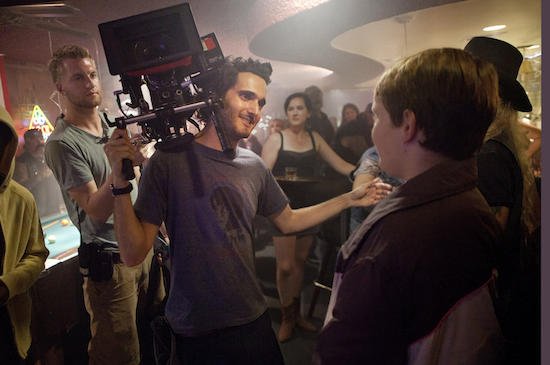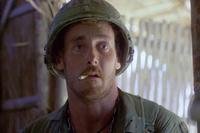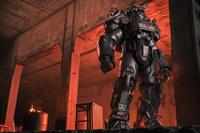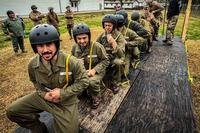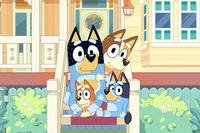
Earth to Echo (opening in theaters July 2nd) aims to be a family-friendly movie that appeals to kids by utilizing the kind of contemporary technology that's part of their everyday lives with a nostalgia for '80s kid movies that should appeal to grownups.
Producer Andrew Panay approached director Dave Green and writer Henry Gayden with a simple day: adapt the "found footage" genre that's dominated horror movies for the last few years to a family-friendly story. Earth to Echo is the tale of three young boys (soon joined by a girl to add some smarts and broaden the demographics) who set out to solve the mystery when they phones go haywire. The encounter a tiny alien they call Echo and then have to save the space creature from the adult world and help send it back home.
%embed1%
Director Dave Green talked to Military.com about his experiences making the movie and how he got his big break in Hollywood.
Who do you think the audience will be for "Earth to Echo"?
In the screenings we've had so far, we've seen kids and parents really latch onto the movie for different reasons, which has been really exciting for me. For parents, the movie gives them a little bit of a nostalgic feeling, reminding them of the movies they watched and loved when they grew up, 80's movies like Stand By Me and Goonies and those Amblin adventure movies that were so much fun.
For kids, the movie is something else. What we tried to do, what we wanted to do for kids, was to give them a movie that spoke to them at their own level, that spoke to kids honestly and really didn’t pander. I remember being a kid and feeling like certain movies just had “movie kids” in them and the characters weren't real and they weren't going through the same things that I was going through as a kid.
This movie is shot from the kids’ perspective and point of view. The kids in the audience really seem to feel like it’s their authentic document that they have a great deal of ownership over, which makes me really excited.

Describe the storytelling technique, because that’s one of the things that seems different about "Earth to Echo."
The movie is shot and told through the point of view of our main character named Tuck Simms, who's an aspiring filmmaker. He's 13 years old. You know like so many kids today, he shoots and documents every single thing he sees in the world around him and he lives his life online as a YouTube blogger.
The story starts when something happens to him and his best friend. They get these strange signals that start to appear on their cell phones and they don’t know what the source of the signals are or why, what's really going on with their phones. But Tuck being the excitable filmmaker that he is, shoots everything and says we've got to investigate this and the kids decide to go on this adventure to trace down the source of their abducted cell phones.

Part of what this allowed us to do was shoot the movie from the kids' point of view in a way that really kind of puts the audience in the driver's seat and allows the audience to experience the movie as if you're one of those kids. As a storyteller, that was really a fun because it created a set of rules where I had one arm tied behind my back, because I couldn’t ever cut to my bad guys or I couldn’t ever cut away to something that the kids weren't experiencing, but the advantage was it really puts the audience in the shoes of our main characters.
The current phone technology allowed us to say that Tuck, as our 13 year old narrator, can not only shoot the movie, but he can also assemble the movie and he can also narrate the movie. He can also add music and he can also skip through time and he can also add aerial shots, Google Maps flyovers and stuff like that, that being the amateur filmmaker that he is. The movie is really built in his language as a budding filmmaker.

Have you shown this movie to kids in that age group and who are conversant in making their own online videos? Is this something that’s really resonating with that audience?
It absolutely has. You know one of the first shots in the movie is a shot of Tuck's video blog. And from the moment the movie starts, you can kind of hear the kids in the audience kind of click in from that very first shot. It really does help our audience kind of click in to what the movie is in a way that I wasn’t really expecting, because my writer and I are in our 30’s. We thought, “Oh, yeah, sure, he films everything and he goes on YouTube and he posts everything and we didn’t really stop to think about how deeply kids really think about that language and how much YouTube is a part of their lives.
When I was a kid, I would go home ad do my homework and then watch TV for a little bit, but I feel like there's a good chunk of the kid audience today that goes home and does their homework and just watches YouTube instead of television.

"Earth to Echo" is your first feature. What's your background and how did you get hired to make this movie?
That’s a great question. After I graduated from school, I worked as an assistant for a while on Sam Raimi's Spider-Man movies. I was a producer's assistant on Spider-Man 3. And that was kind of like my graduate school. I got to watch how this whole production worked and it was fascinating just to see all the moving parts.
When I was done with that opportunity, I started making some short films and music videos and little commercials, which I had been doing as a kid, but had taken a little bit of a break when I was being an assistant. I just kept making shorts and making these videos and, honestly, I was just shooting anything that anyone would give me cash to produce. Usually they were lower-budget projects, but I think the fact that they were lower budget also allowed me to kind of put my stamp on them and really play with them and give them the flavor of things that I love, which at the time was comedy and action and sometimes dark comedy.

I had just finished making a short that was posted online and Andrew Panay, Earth to Echo’s producer, saw it and he called me in for what they call a general meeting, which is where you say hello, introduce yourself, chat for an hour, and just have a nice conversation. But in this meeting, as soon as I walked in, my producer said, “This is going to be the best general meeting of your life. I was a little taken aback and I wasn’t sure if I should believe him or not, but he said “We have this idea about kids who go out in the middle of nowhere and discover something and they film the whole adventure themselves.”
This idea was sort of in the wheelhouse of a couple other things that Henry Gayden, my writing partner, and I were kicking around on our own before I had even met Andrew. Just growing up in the 80's and being fans of Amblin movies and adventure movies and movies that were told from kids' points of view. We really had been wanting to make a movie like that, so it was a very lucky coincidence to meet Andrew at that moment. He gave me his card and said, “Think about it over the weekend and call me. You know I work 24/7.”

That weekend I talked to Henry about it. At first it was like, “How do you make a movie out of one sentence, but we were inspired by it and it was very easy to start throwing ideas at it and to get the ball rolling and a few days later Henry said, “Well, what about this? These are your three main characters and here are their names and here's where they live and maybe this, maybe that.” We would meet several times a week and Andrew was definitely a driver in that, in those early days, and he was saying, “Get back to me, get back to me,” and we would talk four or five times a week and build the story beat by beat.
Within three or four weeks, we had a full story pitched it’s more or less the movie that we ended up with, plus or minus one or two scenes. I went out and I shot a one-minute clip that was kind of like a faux-trailer for the movie that I got friends of friends to have their kids be in this little clip and I recorded voiceover and put music to it. That clip was something that we could show the studio that gave them an example of what the tone of the movie would feel like, what the style would look like, the authenticity of the kids' voices and how they would sound, all that. And once the studio saw that, they said yes and we were off to the races.
